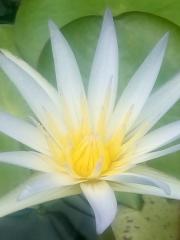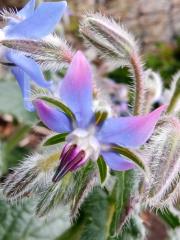-
Posts
1,597 -
Joined
-
Last visited
-
Days Won
84
Content Type
Profiles
Forums
Events
Blogs
Gallery
Store
Everything posted by Alchemica
-
From the album: Healing in the gardens
-
From the album: Healing in the gardens
-
From the album: Healing in the gardens
-
From the album: Healing in the gardens
-
From the album: Healing in the gardens
-
From the album: Healing in the gardens
-
From the album: Healing in the gardens
-
I thought I'd share here a project from last year that gave me hope and healing through a community garden and how such can positively impact mental health I have to find more ways to do projects like this, it was the first thing in a long time that improved my mental health Late last year was the first time I've achieved a longer-term personal goal in a very long time. It's hard for people to understand when the goal-oriented, sequential step-by-step organisation for a longer-term outcome part of your brain doesn't work properly just exactly how hard that is. In doing that, I managed to take the desolate wasteland of illness and imbued some hope, meaning, purpose and contribution. That process is reflected in the garden pictures below. It's taken me a long time to start re-investing the illness force, allegiance to the pain, back into healthy things. I had invested a lot of my super scattered ill energy at the community garden and got a medicinal garden out of it through trial and error It helped me develop a special healing relationship with plants while so ill. The medicinal patch became a sacred healing space for me to start caring for my personal ecosystem and stay connected to the community. I enjoyed the medicinal patch as growing things was intrinsically motivated and there was no rigidity to an outcome - any success was a win and boost to self-esteem, any failure no big deal It provided some vital aspects - something to care for beyond the self - novelty and seeing things burst to life - Trial and error approaches, without ANY expectation of outcomes other than giving things a go - Celebrating any small outcome of success, not "meeting quotas" Like my life... initially barren, empty, dry Learning to rise from the darkness by growing seeds First glimmers of light Growth Coming to bloom Returning full circle. My lessons in attempting a medicinal patch despite being functionally very impaired: It's very different going from pots and home gardening and buying lots of plants to community garden plot planting from seed. Particularly going essentially solo and with severe functional impairments. 1. Start simple and get simple happening in the plot first before you go in anyway complicated. If the world of herbal medicinal plants too over enthuses you, pick just a few functional plants to fill a patch initially. Get a feel for it as you go and up your commitment as you see how things fare 2. You'll need so much time if you're starting from seed vs the rapid growth expected from conventional veggie gardening and faster plants etc. Some are slow projects from seed. White Sage, Dan Shen etc 3. Be patient for the seasons. Jumping in early even with a heat mat and greenhouse can just cause issues. 4. Work out weed control and watering options for warm months. For me, despite thinking I got all the soil 'good enough' prepared, weeds were problematic
-
What have I noted about running on low intakes of carbohydrates? I've been running low carbs. To the point most fruit sounded scary and I got very selective with fruits and anything carbs - occasionally a few chickpeas was my limit. I've only just started putting them back in significantly ie some brown rice - I don't have bread, cereal. pasta etc. I was very hesitant to start putting in significant carbs again as they do seem to significantly impact weight aspects for me but I was getting totally dysfunctional Why the sourpuss? Maybe it's your low carb diet In direct contrast to what advocates of low-carbohydrate diets promise—an end to mood swings and fatigue, low-carb diets can lead to pronounced feelings of depression and sadness, even rage. "People feel very angry, and their antidepressants don't work well, either" Low-carb diet may particularly have an adverse effect on those prone to low moods. “If you’ve cut our carbs and experience anxiety or depressive feelings as a result, you’re actually less likely to exercise, eat well and take care of yourself. "...the low-carbohydrate diet may have had detrimental effects on mood that, over the term of one year, negated any positive effects of weight loss" [1] Restricting carbohydrates could make it hard for you to fall and stay asleep. [2] As I mentioned in the sleep bit: Also, fasting blood glucose results have been persistently somewhat elevated causing concern. Can being low on carb intake paradoxically potentially do that kind of blood glucose dysregulation? It seems it can... “Why is my fasting blood glucose higher on low carb?” I hadn't heard of “adaptive glucose sparing” [3] My cognition was crap, probably from the months of sleep deprivation too. Persistent odd states of consciousness, too. Despite a growing body of clinical evidence suggesting that low-carbohydrate diets can be helpful for people with brain problems, including neurological, psychiatric, and cognitive disorders such as Alzheimer’s disease, a low-protein, high-carb diet may be an easier alternative to calorie restriction for people looking to preserve brain health and prevent cognitive decline [4]. These findings have been critiqued "There is a strong consensus that a diet rich in carbohydrates and fiber is crucial for brain health and Alzheimer's prevention." (along with associated fiber deficiencies also harm our guts and subsequently our microbiome, which can also pose negative long-term effects on the brain and incite brain fog, confusion, and even anxiety). ...the low-protein, high-carbohydrate diet appeared to promote hippocampal health and biology in the mice, on some measures to an even greater degree than those on the low-calorie diet [1] https://www.sciencedaily.com/releases/2009/11/091109173614.htm [2] https://www.livestrong.com/article/482729-i-cant-sleep-on-a-low-carb-diet/ [3] https://www.dietdoctor.com/low-carb/fasting-blood-glucose-higher [4] https://www.medicalnewstoday.com/articles/323772.php
-
This plant was once of interest at the forums and on and off of interest to me but I've not heard much of people's positive experiences with it. If you have anything to share, feel free. Radix puerariae is one of the most widely used ancient traditional Chinese medicines and is also consumed as food. Kudzu is now considered for the treatment of many kinds of addictions, metabolic conditions, pain and for it's CNS therapeutic potential. The most abundant isoflavone of kudzu root is puerarin, but it also contains daidzein, daidzin and other isoflavones It selectively suppresses ethanol intake and inhibits mitochondrial aldehyde dehydrogenase (ALDH-2, an enzyme involved in serotonin (5-HT) and dopamine (DA) metabolism and alters monoamine levels. It "specifically targets unique drug related episodic surges in dopamine, a pathophysiologic mechanism that appears to underlie much of drug-seeking behaviour." [1] " a single dose of kudzu extract (active isoflavone content of 520mg) quickly reduces alcohol consumption in a binge drinking paradigm. These data add to the mounting clinical evidence that kudzu extract may be a safe and effective adjunctive pharmacotherapy for alcohol abuse and dependence. " [study] It's intriguing as puerarin is also a promising rapid-acting antidepressant compound through AMPAR-mTOR signaling pathway activation and increased BDNF [2], exerts anxiolytic-like effects, which may be "associated with normalisation of 5-HT levels and biosynthesis of allopregnanolone in brain" [3] and alleviated the behavioural deficits induced by chronic stress [4] and may be a "potentially valuable preventative therapeutics for memory-related nervous disorders" [5]. It also possibly acts through opioid system. Available evidence from animal models shows that antioxidant and antiapoptosis activities of puerarin protect neurons against damage in dementia and Parkinson's (partially prevents the chemically-induced DA neurodegeneration in mice and rats, and stimulates striatal GDNF) and puerarin has been shown to decrease the morbidity of ischemic stroke [6]. It is neuroprotective and there are therapeutic application of puerarin-related compounds in neurodegenerative diseases It has been called a "potentially valuable preventative therapeutic for brain disorders due to their abilities to promote the neuronal cytoarchitecture and the synaptic functionality" "The antidiabetes activity of puerarin includes reduced body weight gain, improved blood glucose control, and improved glucose tolerance. R. pueraria has been used to treat diabetes for thousands of years, and Puerarin can reduce blood sugar and increase insulin receptor sensitivity in patients with type 2 diabetes". - Acute administration of puerarin significantly improves glucose tolerance in animal models and is promising in humans: - Chronic kudzu root supplementation improves glycaemic control, insulin sensitivity in animal models Kudzu root in the diet in animals is associated with a decrease in fasting glucose and improvements in both glucose tolerance (oral glucose tolerance test) as well as insulin tolerance (indicative of insulin sensitivity) - Isoflavones act as antidiabetic agents [7] and decreased food intake and body weight gain [8] and Pueraria lobata could interfere with antipsychotic-associated insulin resistance and revert overexpressed IR-related proteins [9]' -Paradoxically, there is "evidence for the role of phytoestrogenic compounds in improvement of sexual function and testosterone production in male animals" These isoflavones have been linked to "significantly improved androgenic and sexual behaviour parameters. There was also an increase in serum concentration of FSH and improvement in serum testosterone level" [10] However, like other isoflavones, puerarin, kudzu and its other phytoestrogenic components act in part as selective estrogen receptor modulators displayed preferential affinity for ERβ and altered sperm parameters [11] There are hints that they may be negative as removing dietary isoflavones in adult male rats causes obesity and diabetes in some models [12] and long-term consumption of a diet rich in soy isoflavones can have marked influences on patterns of aggressive and social behaviour [13]. This is coupled with dysregulation of the HPG-axis and thyroid function Isoflavones definitely seem like a bad idea developmentally as they "...produced a delay on the onset of puberty and "at high doses of isoflavones ... prevent the stimulation of the secretion of pituitary hormones and the production of T abolishing the onset of puberty" [14] There is possible for interactions [15] [1] https://www.ncbi.nlm.nih.gov/pubmed/26022266 [2] https://www.ncbi.nlm.nih.gov/pubmed/30284466 [3] https://www.ncbi.nlm.nih.gov/pubmed/29101599 [4] https://www.ncbi.nlm.nih.gov/pubmed/28740098 [5] https://www.ncbi.nlm.nih.gov/pubmed/28734961 [6] https://www.ncbi.nlm.nih.gov/pubmed/30693344 [7] https://www.ncbi.nlm.nih.gov/pubmed/30958562 [8] https://www.ncbi.nlm.nih.gov/pubmed/30402623 [9] https://www.ncbi.nlm.nih.gov/pubmed/30946280 [10] https://www.ncbi.nlm.nih.gov/pubmed/24489512 [11] https://www.ncbi.nlm.nih.gov/pubmed/22278629 [12] https://www.ncbi.nlm.nih.gov/pubmed/27469930 [13] https://www.ncbi.nlm.nih.gov/pubmed/15053944 [14] https://www.ncbi.nlm.nih.gov/pubmed/30924551 [15] https://www.ncbi.nlm.nih.gov/pubmed/24710899
-
Did you have luck germinating this @Glaukus? As one of my first attempts with seeds, I may have been too hasty collecting seed. Revisiting this, from the latest study, it seems to be a rather cumulative effect, not so much acute effects. A gradual improvement was observed in GAD - 68.1% of the patients were completely asymptomatic at the end of the administration of the experimental treatment, and 92.0% of patients were considered with therapeutic success. It managed to progressively improve the activities of patients in daily life, as well as provide palpable improvements regarding their tranquility and their perception of anxiety and depression. https://www.ncbi.nlm.nih.gov/pubmed/30834253
-
First lots have been sent out and received with a couple of people trying the herb too. If they have any experiences with the plant feel free to let us know. Sorry to be a pain @Humbolt but I'm not comfortable sending to Tas/WA these days (thought I put that in but must have not) So @Paradoxical I'll send some seeds for you More on the plant: In traditional medicine, it has been said the herb "alleviates crazy people and those astonished and frightened by thunder". While a simple tea was claimed not to work, 2g dried and powdered, administered with juice was found effective, or a fresh alcohol tincture (Lazar, 2002 via The Garden of Eden) In other sources " The infusion of one bundle with water makes two to three cups of an aromatic tea, a sufficient dosage to produce profound stimulating and aphrodisiac effects" [1] It has featured in snuff blends "...the Tagetes herb clears thinking, relieves tension, aids emotional control" and a fermented tea, which is prepared the same way Sinicuichi (Heimia salicifolia) is prepared [2]. May have more seeds too soon
-

Medicinal Sprouts and Microgreens
Alchemica replied to Alchemica's topic in Pharmacology, Chemistry & Medicine
Sprouts featuring in recent news Johns Hopkins Medicine researchers say they have further characterized a set of chemical imbalances in the brains of people with schizophrenia-related to the chemical glutamate. And they figured out how to tweak the level using a compound derived from broccoli sprouts. They say the results advance the hope that supplementing with broccoli sprout extract, which contains high levels of the chemical sulforaphane, may someday provide a way to lower the doses of traditional antipsychotic medicines needed to manage schizophrenia symptoms It’s possible that future studies could show sulforaphane to be a safe supplement to give people at risk of developing schizophrenia as a way to prevent, delay or blunt the onset of symptoms Further research is needed to learn whether sulforaphane can safely reduce symptoms of psychosis or hallucinations in people with schizophrenia. They would need to determine an optimal dose and see how long people must take it to observe an effect. ” https://neurosciencenews.com/broccoli-sprout-schizophrenia-13051/ -

Experiments getting better sleep.
Alchemica replied to Alchemica's topic in Pharmacology, Chemistry & Medicine
I've been revisiting this trying to improve sleep by changing macronutrient profiles a bit. I was finding restricting carbs with higher protein intake was seemingly messing with sleep even more. Dietary intake habits (affecting the state of nutrition) are perceived to be one of the factors predisposing, causing and consolidating sleeping disorders When it came to one study [1], two thirds of the subjects with sleep difficulties were characterised by an inappropriate state of nutrition. Sleep disorders could have been influenced by the low energy value of the subjects’ diets, as it has been shown that lowering the energy intake significantly decreases melatonin, a low intake of assimilative carbohydrates could have an influence on pinealocytes and the sleep-wake cycle. Similar results were seen in [2] where beans/carbohydrates and dairy were associated with improved sleep quality. "It was ascertained that, despite the insufficient energy value of the subjects’ diets, too much energy came from proteins [they] showed insufficient energy value, insufficient intake of assimilative carbohydrates, fibre, K, Ca, vitamin D3 and water with simultaneous excessive intake of Na, P, Fe, Zn, Cu and vitamins: A, B2 , B6, B12, PP, and C" Inbalanced intake of energy and nutritive value could have affected the proper synthesis of neurotransmitters regulating sleep-wake cycle and melatonin hormone. https://www.ncbi.nlm.nih.gov/pubmed/29265779 https://www.cureus.com/articles/16904-influence-of-dietary-intake-on-sleeping-patterns-of-medical-students -

Neural regeration “formula” crock or potential?
Alchemica replied to FancyPants's topic in Pharmacology, Chemistry & Medicine
Sounds good, hope the terpenes help - keep us updated! Sorry to hear you're being troubled with more struggles, that's no fair -

Neural regeration “formula” crock or potential?
Alchemica replied to FancyPants's topic in Pharmacology, Chemistry & Medicine
Saw this and thought of your post @FancyPants Protein Kinase C: Targets to Regenerate Brain Injuries? "Recent reports describe several non-tumorigenic diterpenes isolated from plants of the Euphorbia genus, which specifically modulate the activity of PKC isozymes promoting neurogenesis." There's lots of attempts to use pro-neurogenic plant compounds for example Ar-turmerone from turmeric essential oil Other molecules include: Eg TrkB (BDNF) 7,8-Dihydroxyflavone (Present in several plants such as Tridax procumbens L., Godmania aesculifolia (Kunth) Standl. and Primula sp. Huperzine A (Huperzia serrata (Thunb.) Deoxygedunin (Azadirachta indica A. Juss) Hyperforin (Hypericum perforatum L) and other polyphenols etc See more botanicals here Eg TrkA (NGF) β-caryophyllene Lion's mane etc GDNF Ibogaine β-Asarone (promotes expression of GDNF, BDNF, and CNTF genes) -
Good point @Kindness. Probably quite messed up... Have been seeing what a *little* bit more carbs in the diet does, seems to be one part of the problem, potentially contributing to the shocking sleep quality and waking up 2am every morning... I went quite restrictive on carbs and a lot of people seem to find such messes with their sleep, potentially in part through the influence on 5-HT I've noted how socially modulated it is. The brain state caused by prolonged social isolation seems to involve neuropeptides
-
I've been struggling with really 'jagged' cognition which makes it super hard to focus which messes up the mood as a consequence. Trying more dietary stuff One is some frequent culinary-medicinal shrooms. I've tried lots of Lion's mane, Reishi, Cordyceps etc but not more widely used culinary mushrooms apart from Oyster (and a little bit of Porchini). Made a big batch of Shiitake (Lentinula edodes) and Oyster (Pleurotus ostreatus) and King oyster mushroom (Pleurotus eryngii) with my homegrown Reishi soup. Seaweed'd it up with the kale which was nice and made it extra shroomy Culinary-medicinal mushrooms may be developed as safe and healthy dietary supplements for brain and cognitive health Mushrooms offer great potential because of the complexity of their chemical contents and different varieties of bioactivities. Available evidence suggests that mushrooms exhibit anti-oxidant, anti-tumor, anti-virus, anti-cancer, anti-inflammatory, immune modulating, anti-microbial, and anti-diabetic activities These mushrooms are known to contain ergothioneine: shiitake, oyster, king oyster or maitake (hen of the woods) can contain up to 13mg in a 3-ounce serving compared to the 5 milligrams in common mushrooms. Ergothioneine may promote neuronal differentiation and alleviate symptoms of depression at plausibly achieved level of daily ingestion [1]. Other findings provide scientific evidence to support the use of Pleurotus ostreatus as a safe and effective mushroom to prevent and treat Alzheimer's disease through the polysaccharides [2]. [1] https://www.ncbi.nlm.nih.gov/pubmed/27134772 [2] https://www.ncbi.nlm.nih.gov/pubmed/27498414 Eating mushrooms may reduce the risk of cognitive decline: https://www.sciencedaily.com/releas…/2019/…/190312103702.htm Trying a few days on some simple rosemary tea over the weekend which I enjoy every now and then. It's one it's easy to dismiss Data suggest potential beneficial properties of acute consumption of rosemary water in humans [1]. Rosemary tea administration exerts anxiolytic and antidepressant effects in mice and inhibits cholinesterase activity [2] "The presence of 1,8-cineole and rosmarinic acid and the absorption of these (and other) compounds may facilitate performance through cholinergic pathways. Serum levels of 1,8-cineole have previously been demonstrated to correlate with task performance following exposure to rosemary aroma." Rosemary polyphenols cause the regulation of several neurotransmitters (dopamine, norepinephrine, serotonin and acetylcholine) and gene expression [3] while the volatiles activate the NGF pathway and the hypothalamus-pituitary-adrenal axis, promoting dopamine production [4] Carnosic acid and carnosol, which are major components of the rosemary extract, were able to promote markedly enhanced synthesis of NGF [5] Also incorporating more 'culinary' sage Sage (Salvia) species effects have been considered and found effective in a range of population groups [6]. A double-blind, placebo-controlled crossover trial involving 30 healthy volunteers found it led to improved ratings in mood post-dose, with the lower dose reducing anxiety (300mg) and the higher dose increasing ‘alertness’, ‘calmness’ and ‘contentedness’ (600mg) Improvements in mood (e.g. alertness, contentedness, and calmness) and cognition were also identified following the single administration of a S. officinalis extract to healthy young adults. The extract was associated with significant enhancement of secondary memory performance at all testing times. The same measure benefited to a lesser extent from other doses. There also were significant improvements to accuracy of attention following the 333-mg dose. In vitro analysis confirmed cholinesterase inhibiting properties for the extract [1] https://www.ncbi.nlm.nih.gov/pubmed/30318972 [2] https://www.ncbi.nlm.nih.gov/pubmed/25910439 [3] https://linkinghub.elsevier.com/retrieve/pii/S0166-4328(12)00657-2 [4] https://www.ncbi.nlm.nih.gov/pubmed/29273038 [5] https://www.ncbi.nlm.nih.gov/pubmed/14600414 [6] https://www.ncbi.nlm.nih.gov/pubmed/27888449 Made Ginkgo pesto from the season's leaves. It's a really nice way to have the stuff Various preclinical and clinical studies have shown a positive effect of Ginkgo biloba to improve cognitive abilities in impaired individuals and reducing anxiety under pathological conditions [1] G. biloba is an effective complementary treatment for ADHD [2] It had a significant difference in ameliorating total and negative symptoms of chronic schizophrenia as an adjuvant therapy to antipsychotics [3]. [1] https://www.ncbi.nlm.nih.gov/pubmed/27908257 [2] https://www.ncbi.nlm.nih.gov/pubmed/25925875 [3] https://www.ncbi.nlm.nih.gov/pubmed/25980333 And keeping the diet diverse I feel you often can't put all your eggs in one basket "___ will effectively fix ___" etc. It's easy to get hyped up about one particular option, float on the wings of expectation, then crash and burn. When you're really mixing it up, I feel the magic starts to come alive. Just like we see in the diet, if you eat the same food all the time, it simply doesn't work and it can easily be detrimental - healthy dietary diversity scores correlate strongly with depression and anxiety in studies. When dealing with healing plants, particularly those used as food, why is it not the same? Often we're tempted to say something will fix something etc and run with it exclusively as a therapeutic. In my experiences, not to discount individual healing potentials, they could be better mixed up in a diverse phytochemical rich diet than using it as a standalone in a more lackluster diet? Today my sprout jar is packed with ready Radish and Broccoli again Yesterday, made Ginkgo pesto with the season's leaves. Along with some Ginkgo, had a Rosemary and Savory tea. Few mixed berries. Have different sprouts with the Ginkgo pesto, which tastes surprisingly nice, also put it on some steamed kale an Roselle leaf with dinner The day before it was a Hibiscus, raspberry, blueberry and citrus peel chia pod. Mistletoe. Green tea The day before a pomegranate session with other healthy additions. Lots of sprouts Unfortunately the "therapeutic merits" of plants and natural products is also propelled by commercial interest so it's easy to buy into that and think one plant is a magic elixir. That's not to say they're not often effective therapeutics but there are strong vested interests Take for example, blueberry research literally funded by Big Blueberry The latest spearmint research for cognition carried out on a propriety blend of a special, patented "high rosmarinic acid" type of Spearmint Ginkgo propelled by trials utilising patented, standardised extracts Saffron research occurring in Iran through government funding, seemingly with the hopes of fortifying the value of their "red gold" etc etc I was one who bought into the promises of Big Blueberry and used them as my almost exclusive fruit... That said, based on the current evidence, a recent review of the available evidence found "blueberries may improve some measures of cognitive performance when consumed for up to six months in duration" [1]. Take for example a variety of fruits are finding therapeutic merit Blueberry, strawberry, pomegranate, blackberry, grape and plum juices or extracts have been successfully tested in cognitively impaired animal models. Published trials of the benefits of blueberry [2,3], pomegranate [4], grape [5.6,7], flavonoid rich orange [8,9,10] in the treatment of small numbers of cognitively impaired and healthy populations, including on mood, have recently appeared. Some we hear little of - eg raspberries. The health-promoting potential of red raspberries includes modulating metabolic disease risk, especially cardiovascular disease, diabetes mellitus, obesity, and neurodegenerative disorders—all of which share critical metabolic, oxidative, and inflammatory links They contain a unique profile of anthocyanins and ellagitannins (with effects via ellagic acid). Red raspberries contain ~92.1 ± 19.7 mg anthocyanins/100 g of fresh fruit [11] Really it seems they are best used as healthy additions to a balanced, varied diet, not trying to carry so much therapeutic weight on their own? That said, I try to avoid the more carbohydrate dense options a bit [1] https://www.ncbi.nlm.nih.gov/pubmed/30999017 [2] https://www.ncbi.nlm.nih.gov/pubmed/28230732 [3] https://www.ncbi.nlm.nih.gov/pubmed/29882843 [4] https://www.ncbi.nlm.nih.gov/pubmed/23970941 [5] https://www.ncbi.nlm.nih.gov/pubmed/22468945 [6] https://www.ncbi.nlm.nih.gov/pubmed/28429081 [7] https://www.ncbi.nlm.nih.gov/pubmed/26864371 [8] https://www.ncbi.nlm.nih.gov/pubmed/28091350 ' [9] https://www.ncbi.nlm.nih.gov/pubmed/26280945 [10] https://www.ncbi.nlm.nih.gov/pubmed/25733635 [11] https://academic.oup.com/advances/article/7/1/44/4524046
-
Having a proper read through the tables, a little disappointed. One that stood out to me was 3',4',5',5,6,7-hexamethoxyflavone (Eremophila debilis) Flavonoid Binding activity to M1 mAChRs "The aerial parts of the endemic Australian plant Eremophila debilis (Myoporaceae) contain 3% dry weight of the biologically active 5,6,7,3',4',5'-hexamethoxyflavone" [1] I'd in the past experimented with some different Eremophilas (longifolia etc) thinking it might be phenylpropanoid EOs making it such a respected bush medicine. This adds an interesting aspect - a flavonoid muscarinic.
- 1 reply
-
- 1
-

-
Comprehensive review on the interaction between natural compounds and brain receptors: Benefits and toxicity [sci-hub] In case anyone wanted things to add to their bucket list... or needed a natural product for that receptor... Includes: Natural products interacting with nicotinic nAChR and with mAChR. Natural products interacting with ionotropic and metabotropic glutamate receptors. Natural products interacting with γ-Aminobutyric acid type A receptors (GABAAR). Natural products interacting with cannabinoid (CBR) type 1 (CB1R) and type 2 (CB2R) receptors Natural products interacting with dopamine receptors (DAR). Natural products that act on insulin receptors and insulin-like growth factor receptors (IGFRs). Natural products acting on receptors for advanced glycation end-product receptors (RAGE). Natural products interacting with receptors associated with neurotrophic factors (NTF). Natural products that interact with immune system receptors. Natural products that interact with the scavenger receptors associated with oxidative stress. Natural products that interact with peroxisome proliferator-activated receptors (PPAR) Natural products that interact with ApoE or LDL receptors.
- 1 reply
-
- 1
-

-
Said three people but I'll likely have enough to send with the next lot of Roselle @superdan Thanks all for the interest.
-
Tagetes lucida As the last one from my garden I enjoyed over the last growing season, aiming to spread the love of this plant to 3 people this year who want to grow it with some free seed (No TAS/WA). Post a reply and I'll get back to you once seed is soon harvested. Once again, I'm just going by the way I've harvested seed from other Tagetes like patula. Hope it's the same. It has a rich spiritual background of traditional use with anti-anxiety and sedative-like properties It's been said to be "vitally important to use very fresh leaves" and experimenters state a dose of 2,000 mg - most participants felt no need to increase the dosage further to “...creates a ‘lucid’ state which can be appreciated in a number of ways: listening to music, contemplating, grooving, introspection, communication, etc. Some of the effects noted are: clarity, alertness, closed-eye visuals, body warmth, body tingles, feeling of well-being, and some time-distortion. The period of alteration lasted 2 to 3 hours in most cases and there was no interference with sleeping afterwards, although many reported increased dreaming (sometimes with weird content).” [1] It is used historically in religious ceremonies including Huichol Indians who ceremonially smoke it with Mapacho and it is also used with other sacred plant medicines [2,3] T. lucida is recommended for treating emotional and nervous disorders, often as part of a mixture with other anxiolytic plants [4] Mexican traditional medicine prescribes T. lucida for “nervios” and “susto”, two culture-bound syndromes described as illnesses characterized by a “state of bodily and mental unrest” able to decrease the ability to achieve daily goals and as a condition of being frightened and “chronic somatic suffering stemming from emotional trauma” "It is used for producing a fragrant smoke (sahumar) to ritually clean houses of evil spirits. The use in sweat baths (temazcal) and for ritual cleansing (“limpias”) are related" Anxiolytic and sedative-like activities through 5-HT1A and GABA/BZD receptors possibly through 6,7,8-trimethoxycoumarin (dimethylfraxetin). Other coumarins have also been reported from the species, such as herniarine (7-methoxycoumarin), scoparone (6,7-dimethoxycoumarin), and the dimethyl allyl ether of 7-hydroxy-coumarin, umbelliferone, esculetin and scopoletin along with flavonoids, some of them with known anxiolytic-like activity, have been reported in polar extracts of this species. Significant anxiolytic-like response effects were found in animal models from 10 mg/kg onward of the aqueous extract An influence on serotonergic neurotransmission by T. lucida was also reported in the antidepressant effects which were likely the result of modulation of serotonin reuptake/release, dependent on 5-HT1A and 5-HT2A receptors. There is not only a significant involvement of the serotonin neurotransmission in the mechanisms of central effects of this species, but also GABAergic participation [5] It is is a source of phenylpropanoid EOs: "at least four chemotypes can exist, characterized by the main presence of (a) high levels of (E)-anethole (up to 74%) and low to very low levels of methyl chavicol (11.57%) or methyleugenol (1.8%), and germacrene D; ( high levels of methyl chavicol (up to 97%), in addition to methyleugenol, methylisoeugenol, and germacrene D; © high levels of methyl eugenol (up to 80%), in addition to methylchavicol and methylisoeugenol; and (d) high amounts of nerolidol (around 40%), in addition to methyleugenol, methylchavicol, and caryophyllene oxide" [1] https://www.world-of-lucid-dreaming.com/mexican-tarragon-tagetes-lucida.html [2] https://www.americanherbalistsguild.com/…/jahg_spring_2017_… [3] http://entheology.com/plants/tagetes-lucida-marigolds/ [4] https://www.mdpi.com/1420-3049/23/11/2847/pdf [5] https://www.ncbi.nlm.nih.gov/pubmed/26873624
-

Medicinal Sprouts and Microgreens
Alchemica replied to Alchemica's topic in Pharmacology, Chemistry & Medicine
Still going with this. I particularly enjoy a Radish and Broccoli mix. I buy a wheatgrass/barley grass, spirulina and chlorella affordable mix (from Aldi of all places) that is much easier than doing the wheatgrass though Sorting out the Value of Cruciferous Sprouts as Sources of Bioactive Compounds for Nutrition and Health Edible sprouts are a valuable vehicle and opportunity to impact health, delivering beneficial bioactive compounds once incorporated in the diet on a regular basis. Sprouts of Brassicaceae, like broccoli, radish, kale, mustards, radishes etc are noticed because of their high content of micronutrients, nitrogen–sulfur compounds (glucosinolates (GLSs) and their derivatives, isothiocyanates (ITCs), and indoles) and phenolic compounds (mainly phenolic acids, flavonols, and anthocyanins) Apart from broccoli, red radish sprouts contain high concentrations of glucoraphasatin (4-methyl thio-3-butenyl) and glucoraphenin, which are its major GLSs. Glucoraphenin is hydrolyzed to the ITC sulphoraphene (SFE) It is possible to get "reduction of fasting blood glucose and insulin concentration and resistance to almost [normal] physiological levels. There is notable normalisation of blood glucose levels and the lipid profile -

Licorice root for depression and fatigue?
Alchemica replied to Alchemica's topic in Pharmacology, Chemistry & Medicine
Finally got around to exploring this but in a different way. Want to see how it goes for exhaustion at very low doses, not in the stacks that I used to be into... The science of liquorice: whether you love the dark root – or hate it Glycyrrhizic acid itself seems to have neuroprotective effects and other constituents antidepressant and beneficial effects Making my own liquorice Licorice root with Star anise, a little or a lot, to taste has been used to flavour such things [1] It is suggested to consume only low doses at a time of the root I used root (I'm using Glycyrrhiza uralensis) and home grown Aniseed Myrtle, Star Anise etc Aqueous extraction of a decent qty of herbs afforded this solution that I didn't even end up colouring. Smelled delightful. No need for sweetener. Which was then set into little squares with only small doses of root in each. I also made sugar free homegrown Hibiscus, Monk Fruit, Cinnamon and Clove 'jam' that turned out really nice for Hibiscus' medicine in a sugar free way and family enjoyed that -
Trying different proteins for serotonergic effects (along with Mg/Zn etc) these days Protein source tryptophan from seeds with a high tryptophan-to-total protein ratio can be comparable to pharmaceutical grade tryptophan in some studies [1, 2] They are nutrient-dense and mostly anti-nutrient-free. The seeds of Cucurbita sp.have been traditionally used as medicine. Among the Cucurbitaceae members, pumpkin seeds are big, abundant, and edible. Yet, these seeds are mostly discarded as agro-industrial wastes [3]. They are rich in protein, polyunsaturated fatty acids (PUFA), minerals (magnesium, phosphorous, copper and potassium, iron, zinc, manganese), carotenoids, beta-carotene, and Vitamin E "...a remarkable assortment of health-enhancing nutrients, from magnesium, protein, niacin, and zinc, to its high concentration of tryptophan and essential fatty acids, pumpkin seeds provide a powerful health punch" - anti-inflammatory and anti-oxidative properties - protective activity against cardiovascular diseases - hypoglycaemic properties: Acute consumption of 65 g of pumpkin seed markedly reduced postprandial glycemia. Pumpkin seed has potential as a hypoglycemic food [4] - because of the high tryptophan content, pumpkin seeds might ease depression, anxiety, nervous irritability and insomnia - shown to improve the iron status I like other 'waste' products that are healing, too. [1] https://www.ncbi.nlm.nih.gov/pubmed/18066139 [2] https://www.ncbi.nlm.nih.gov/pubmed/16053244 [3] https://www.ncbi.nlm.nih.gov/pubmed/28463796 [4] https://www.ncbi.nlm.nih.gov/pubmed/30055778 Sure I try to put love into some meals but other times, just need sustenance. I chew through quite a bit of protein powder to keep at 0.8g/kg. Was doing well dropping weight by using that. I've tried so many proteins from hemp to soy but just settle on whey most of the time. Epidemiological and clinical studies have shown that dairy products have beneficial effects on cognitive decline and dementia, which may in part occur through whey peptides [1] As I've sort of subjectively noticed, chronic ingestion of diets differing in protein source elicits marked differences in the brain tryptophan concentrations and serotonin synthesis [2]. and tryptophan concentrations and serotonin synthesis in brain neurons are remarkably sensitive to which protein is present in a meal [3]. Whey protein has been proposed as a potential functional nutritional food supplement that prevents the progression of neurodegenerative disorders [4] and and useful for metabolic disorders [5,6] A hydrolyzed protein source may be more adequate to increase brain tryptophan and 5-HT function compared with intact alpha-lactalbumin protein or pure tryptophan [7]. While there have been "no significant changes in clinical outcomes" in some neurodegenerative disorders like Parkinson's in human studies, it improves some biomarkers [8] Whey consists of a heterogeneous group of proteins, including beta-lactoglobulin (35%), alpha-lactalbumin (12%), proteose peptone (12%), immunoglobulins (8%), and bovine serum albumin (5%) Due to greater solubility, more rapid digestion, and resultant higher plasma concentrations of amino acids, whey appears to be a favourable protein to provide nutritional and functional benefits. alpha-lactalbumin: - Lactalbumin increased plasma tryptophan (3-fold) and the tryptophan ratio (50%) [9] - may enhance sustained alertness early in the morning after an overnight sleep, most likely because of improved sleep [10]. - Dietary protein rich in alpha-lactalbumin improves cognitive performance in stress-vulnerable subjects via increased brain tryptophan and serotonin activities. - Supplements of lactalbumin may be useful for nutrition research in relation to age- or disease-related memory decline [11] [1] https://www.ncbi.nlm.nih.gov/pubmed/30011836 [2] https://www.ncbi.nlm.nih.gov/pubmed/23395255 [3] https://www.ncbi.nlm.nih.gov/pubmed/19454292 [4] https://www.ncbi.nlm.nih.gov/pubmed/29199432 [5] https://www.ncbi.nlm.nih.gov/pubmed/26516411 [6] https://www.ncbi.nlm.nih.gov/pubmed/25888881 [7] https://www.ncbi.nlm.nih.gov/pubmed/18648776 [8] https://www.ncbi.nlm.nih.gov/pubmed/27423583 [9] https://www.ncbi.nlm.nih.gov/pubmed/23395255 [10] https://www.ncbi.nlm.nih.gov/pubmed/15883425 [11] https://www.ncbi.nlm.nih.gov/pubmed/16174675































